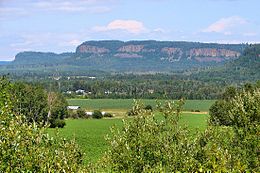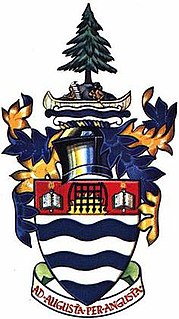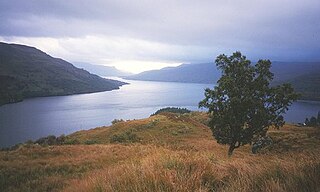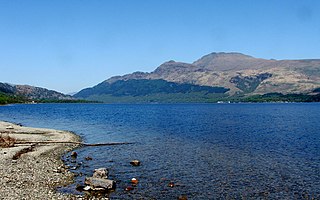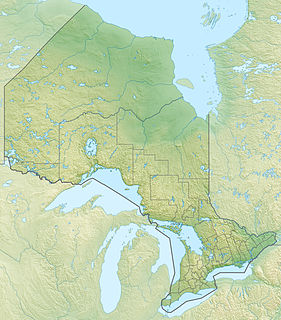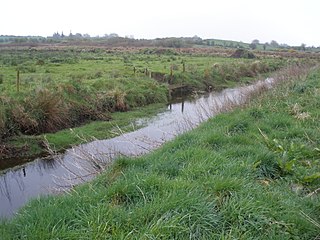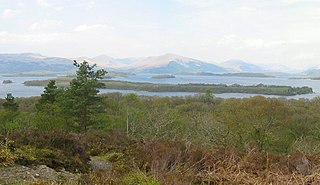| Nor'Wester Mountains | |
|---|---|
The Nor'Westers seen from Neebing Township | |
| Highest point | |
| Peak | Mount McKay |
| Elevation | 483 m (1,585 ft) |
| Coordinates | 48°20′43″N89°17′8″W / 48.34528°N 89.28556°W Coordinates: 48°20′43″N89°17′8″W / 48.34528°N 89.28556°W |
| Geography | |
| Country | Canada |
| Province | Ontario |

The Nor'Wester Mountains are a group of mountains immediately south of Thunder Bay, Ontario, Canada, located on the southern limits of the City of Thunder Bay and south of the Kaministiquia River. [1] :32,33 Mount McKay is the highest, most northern and best known of these mountains. Other prominent peaks include Godfrey, Hurlburt, Johnson, Matchett, McRae, McQuaig, Rose, and Squaretop.

A mountain is a large landform that rises above the surrounding land in a limited area, usually in the form of a peak. A mountain is generally steeper than a hill. Mountains are formed through tectonic forces or volcanism. These forces can locally raise the surface of the earth. Mountains erode slowly through the action of rivers, weather conditions, and glaciers. A few mountains are isolated summits, but most occur in huge mountain ranges.

Thunder Bay is a city in, and the seat of, Thunder Bay District, Ontario, Canada. It is the most populous municipality in Northwestern Ontario with a population of 107,909 as of the Canada 2016 Census, and the second most populous in Northern Ontario after Greater Sudbury. Located on Lake Superior, the census metropolitan area of Thunder Bay has a population of 121,621, and consists of the city of Thunder Bay, the municipalities of Oliver Paipoonge and Neebing, the townships of Shuniah, Conmee, O'Connor, and Gillies, and the Fort William First Nation.

Ontario is one of the 13 provinces and territories of Canada and is located in east-central Canada. It is Canada's most populous province accounting for 38.3 percent of the country's population, and is the second-largest province in total area. Ontario is fourth-largest jurisdiction in total area when the territories of the Northwest Territories and Nunavut are included. It is home to the nation's capital city, Ottawa, and the nation's most populous city, Toronto, which is also Ontario's provincial capital.
Loch Lomond, 287 m (942 ft) above sea level, collects most of the runoff within the Nor’Wester Mountains; Loch Lomond is drained by the Lomond River. [1] :5 A few square kilometers of mountain slope south of Mount McKay are drained by Whiskeyjack Creek. [1] :5

Loch Lomond is a large spring-fed lake located 102 metres (335 ft) above Lake Superior, 6 kilometres (3.7 mi) south of the city of Thunder Bay, Ontario, Canada. It is located in behind Mount McKay, in the Fort William First Nation and Neebing Municipality. Loch Lomond is considered to be a deep oligotrophic lake. The natural re-charge level of Loch Lomond from underground spring water is estimated at 57,100 m3 (12,600,000 imp gal) per day.
